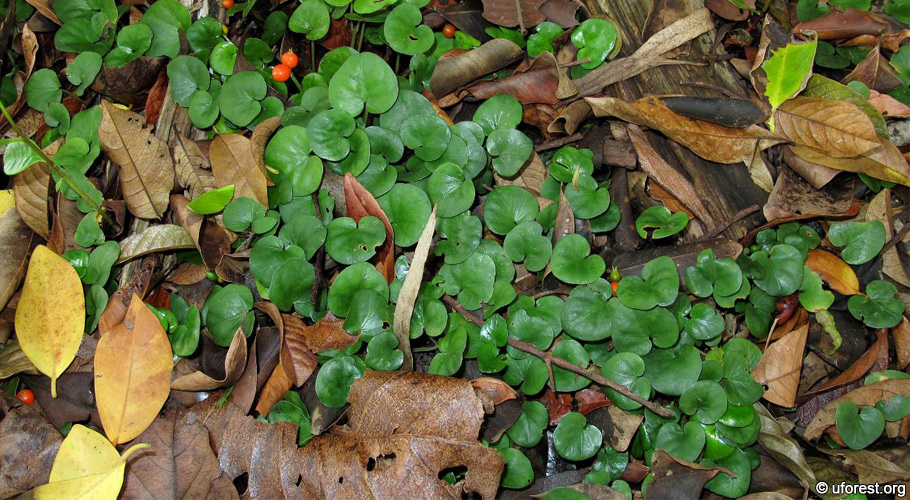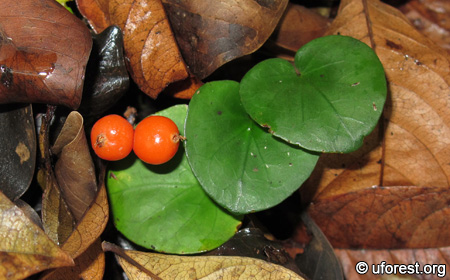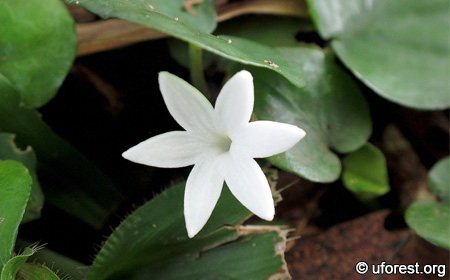Geophila repens (L.) I.M. Johnst.
| Etymology | Genus | Earth-loving; referring to its creeping habit |
|---|---|---|
| Species | Creeping; referring to its habit | |
| Family | Rubiaceae | |
| Synonyms | Psychotria herbacea L., Geocardia repens (L.) Bakh.f. | |
| Common Names | Snake Pennywort, Pegaga Ular, Rat Pennywort (Pegaga Tikus) | |
| Status | Native: Endangered | |
| Form | Creeping herb | |
| Native Distribution | Pantropical | |
Diagnostics:
An uncommon prostrate herb that can only be found in a few localities (see description). It is shade-loving, hence only found under tree canopies. The leaves are oppositely arranged, rounded with a heart-shaped base. The leaf blade is also hairless, mildly glossly, and palmately-veined. A useful guide is to look out for its small but bright orange fruits, which are almost always present.
Interesting Facts:
Its pollination and dispersal biology are poorly-documented, though Guppy (1906), and Ridley (1930) suggested it to be bird-dispersed because the brightly coloured fruits. A study by Yumoto (1999) in Colombia confirmed this through the observations of the Salvin's curassow (Mitu salvini), a ground-dwelling bird feeding on the fruits and postulated that it is an important disperser for Geophila repens.
Natural populations can still be found at the southern regions of Singapore, namely: at the manicured grass patches near Peirce Road, Henderson Road, Makeway Avenue, and Orchard Boulevard; in the cemeteries at Jalan Kubor and Outram Road; in Pearl's Hill City Park, Fort Canning Park, and Istana Park; and in the natural vegetation adjacant to Jacob Ballads Children's Garden (Teo et al., 2010; pers. comm. Crag W. & Koh J.; pers. obs.).

The Snake Pennywort, photographed in Pearl's Hill City Park.

Bright orange fruits and close-up of leaves.

The star-shaped flower.
References
Guppy HB. (1906) Observations of a Naturalist in the Pacific between 1896 and 1899. Volume II: Plant-Dispersal. Macmillan and Co Limited, New York. 627 pp.
Ridley HN. (1930) The Dispersal of Plants throughout the World. L. Reeve & Co., LTD., London. 744 pp
Teo S, BR Kurukulasuriya & HTW Tan. (2010) The distribution and status in Singapore of the snake pennywort, Geophila repens (L.) I.M. Johnst. (Rubiaceae). Nature in Singapore, 3: 183-186.
Author: Siyang
Posted: 2012-01-13 / Modified: 2025-09-27